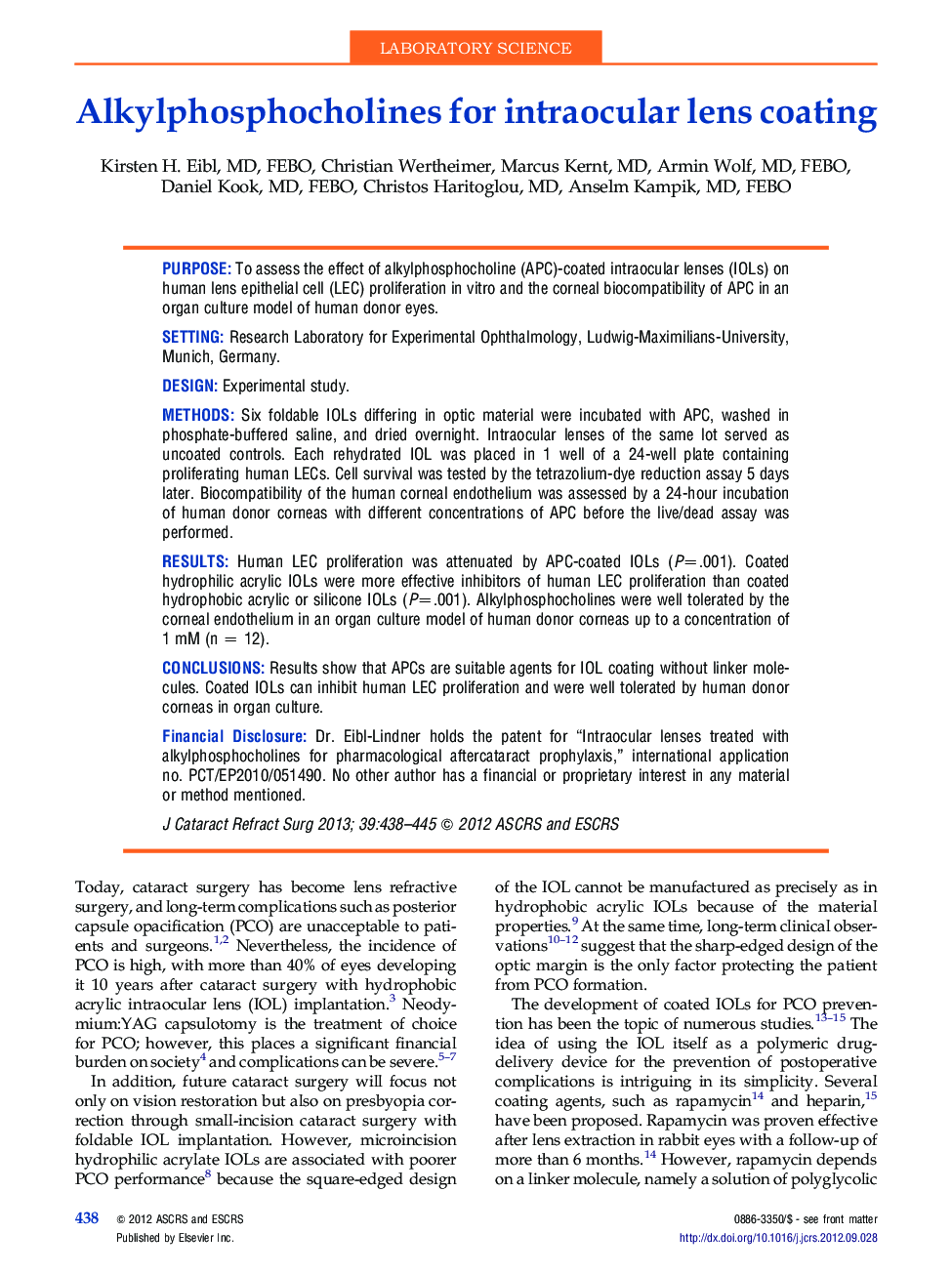| Article ID | Journal | Published Year | Pages | File Type |
|---|---|---|---|---|
| 4017364 | Journal of Cataract & Refractive Surgery | 2013 | 8 Pages |
PurposeTo assess the effect of alkylphosphocholine (APC)-coated intraocular lenses (IOLs) on human lens epithelial cell (LEC) proliferation in vitro and the corneal biocompatibility of APC in an organ culture model of human donor eyes.SettingResearch Laboratory for Experimental Ophthalmology, Ludwig-Maximilians-University, Munich, Germany.DesignExperimental study.MethodsSix foldable IOLs differing in optic material were incubated with APC, washed in phosphate-buffered saline, and dried overnight. Intraocular lenses of the same lot served as uncoated controls. Each rehydrated IOL was placed in 1 well of a 24-well plate containing proliferating human LECs. Cell survival was tested by the tetrazolium-dye reduction assay 5 days later. Biocompatibility of the human corneal endothelium was assessed by a 24-hour incubation of human donor corneas with different concentrations of APC before the live/dead assay was performed.ResultsHuman LEC proliferation was attenuated by APC-coated IOLs (P=.001). Coated hydrophilic acrylic IOLs were more effective inhibitors of human LEC proliferation than coated hydrophobic acrylic or silicone IOLs (P=.001). Alkylphosphocholines were well tolerated by the corneal endothelium in an organ culture model of human donor corneas up to a concentration of 1 mM (n = 12).ConclusionsResults show that APCs are suitable agents for IOL coating without linker molecules. Coated IOLs can inhibit human LEC proliferation and were well tolerated by human donor corneas in organ culture.Financial DisclosureDr. Eibl-Lindner holds the patent for “Intraocular lenses treated with alkylphosphocholines for pharmacological aftercataract prophylaxis,” international application no. PCT/EP2010/051490. No other author has a financial or proprietary interest in any material or method mentioned.
